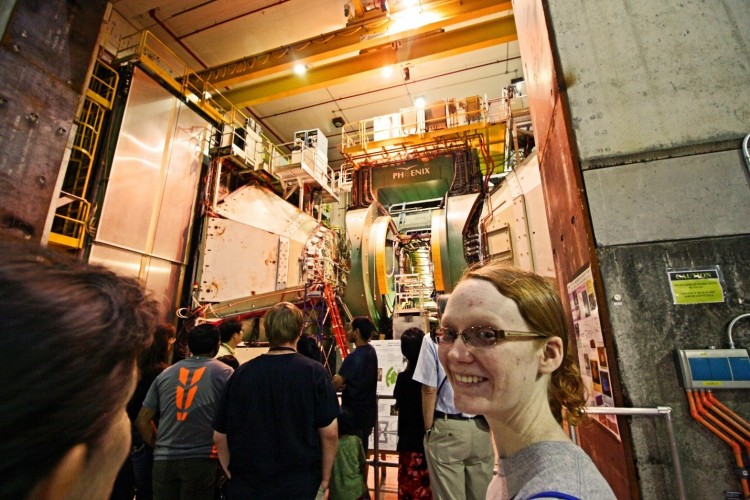Colliding with my first particle accelerator experience
As mentioned in my previous article (Astrophysics internships with algorithms), my summer was spent at Brookhaven National Laboratory (BNL) working for the Data Management and Software Engineering group. BNL is a laboratory under the Department of Energy’s Office of Science, and I got the internship via the Science Undergraduate Laboratory Internship (SULI) program. SULI offers internships at laboratories all over the country, it’s worth checking out.
Particle accelerator
Some of the facilities found at the Brookhaven National Laboratory include the National Synchrotron Light Source-II (generates intense beams of light to help image the atomic-level of materials), the Accelerator Test Facility, the NASA Space Radiation Laboratory, and the Relativistic Heavy Ion Collider (RHIC), which smashes particles together to simulate early-Universe conditions for further study. The particle accelerator was the first to collide ions as heavy as gold (hence the “heavy ion” part), the resulting quark-gluon plasma generated by the collision revealing a near “perfect” liquid (aka frictionless flow). The RHIC is open to the public during their Summer Sundays, and It gave me a chance to visit my first particle accelerator!
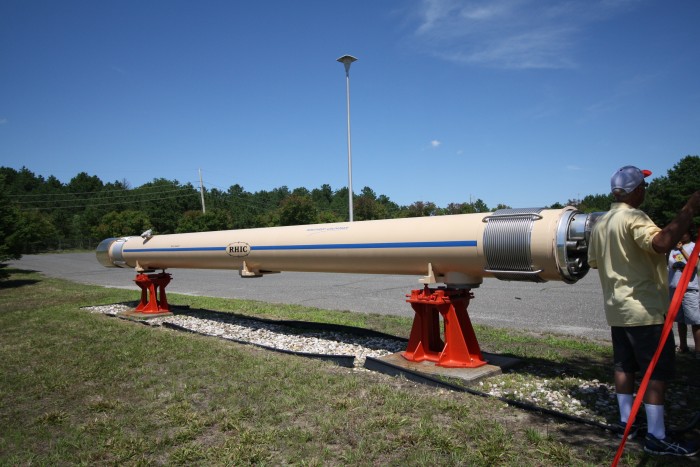
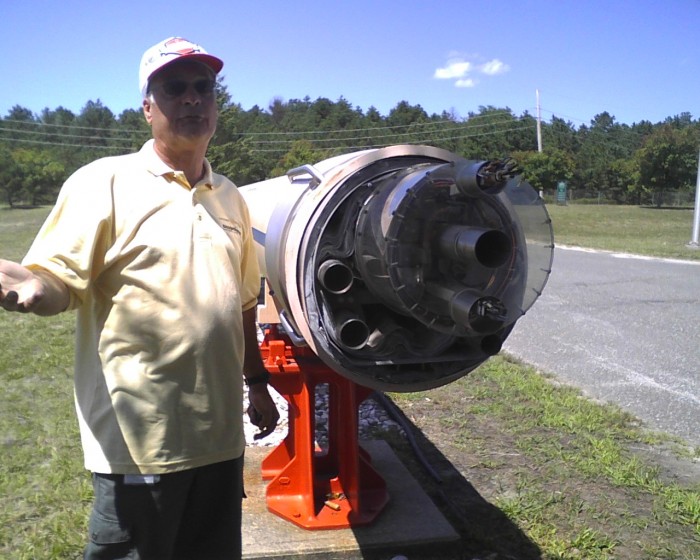
The first place we visited on the tour had a piece of the facility’s piping for us to look at. The guide explained some of the construction on the inside, where the beams of particles travel separately between detectors. For me, the coolest part was the extreme temperatures present in the collider. The layers of Mylar sheets surrounding all the other parts help keep it insulated, which must be kept as cold as possible for the best conduction (needed for the electromagnets that produce a magnetic field to bend the particle streams into a curved path), generally between and 2-3 Kelvin, or about -456 degrees Fahrenheit. When collisions take place at one of the detectors, the particles traveling near the speed of light (hence the “relativistic” part) can produce temperatures exceeding that of the Sun! BNL made a record back in 2012 when a collision reached about 4 trillion Kelvin (or 7.2 trillion degrees Fahrenheit), which was when the quark-gluon plasma was first generated (the Large Hadron Collider in Switzerland has since made even higher temperatures). Don’t worry, though, the collisions are on such a small scale that they aren’t harmful to us; the analogy BNL likes to make is “the actual impact of the speeding ions on each other is about the same as the impact of a mosquito hitting a screen door on a summer evening”.
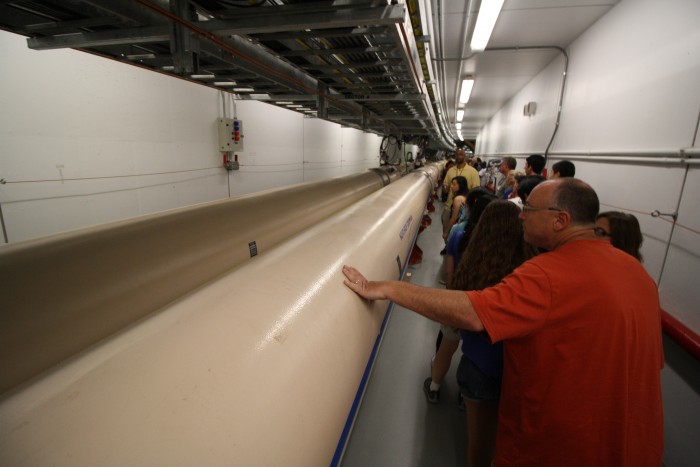
The particle accelerator is only operational six months of the year, and to reduce costs via temperature concerns, it is run during the winter. Hence why we were able to go and see the facility up close during the summer and go right down to the pipes where the particles would normally be streaming. We were also able to go see the detectors, the place where the two streamlines converge into one for collisions. Below is pictured the PHENIX experiment. In the very middle, you can see a thin rod connecting the bulky mechanisms surrounding it; this is where the particles would collide and measurements made. PHENIX detects a variety of particles in a collision, but it mainly is looking for photons and leptons that pass through the collision unchanged, which contain information about the inside of the collision that would otherwise be undetectable.
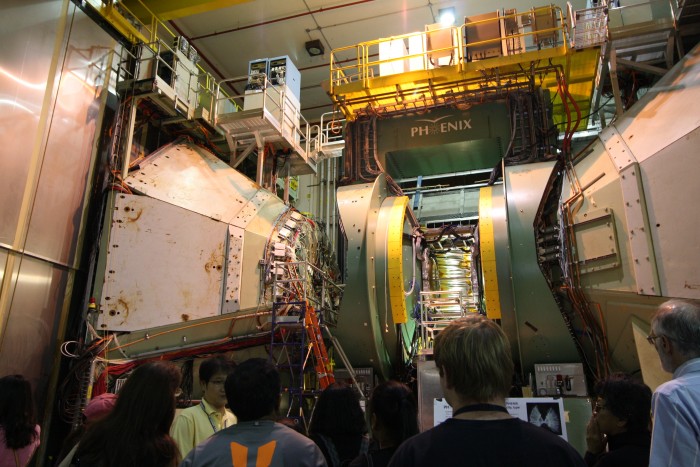
Not going to lie, the chance to see a particle accelerator in person made me super happy! These type of experiments let us see the most basic mechanisms of our world, and it’s always exciting to learn something new about how things actually work (the most recent “big” discovery was the Higgs Boson at the LHC). Research is now being done into what it would take to turn RHIC into eRHIC—the electron Relativistic Heavy Ion Collider. It would be the first one ever made, and would bombard particles with electrons instead of other heavy ions. This would theoretically give us information about the strong nuclear force that binds all visible matter together. I am very happy to have had the chance to see a particle collider, and I am excited about what scientists may discover in the future!

